Mpikaroka mankafy manao sakafo anaty alaRindra Nantenaina, a PhD student at the University of Antananarivo, affiliated with the lab, shares a story about how she loves cooking in the field ... Tiako ny misakafo fa mbola tiako kokoa ny miaina ny natiora any an’ala Rindra no anarako, mpianatra mpikaroka, misehatra manokana amin'ny fifandraisan’ny zava-maniry sy ny biby mpamafy voa/vihy an’ala aho. Anisan'nyy fialam-boly tiako ny mandeha misakafo miaraka amin’ny namana rehefa mitoetra ao an-drenivohitra. Fa mbola tiako lavitra mihoatra an’izay anefa ny misitraka ny fitsokan’ny rivotra madio, ny mahita ireo zava-maitso isan-karazany ary ny maheno ny hiram-borona sy varika sy ny fikorianan’ny rano ao anaty ala. Nitsiry tany anatiko ny hevitra hanambatra ireo fialam-boliko roa ireo...
Teo no nitsiry tany anatiko ny hevitra hoe maninona tokoa moa raha ampisiana aty anaty ala aty izany karazan-tsakafo izany e!!! Sady mampiala voly rehefa tsy miasa iny, no manome fahafaham-po ny lela, ary mahavoky ny kibo. Angaha izay ihany, fa sady mizara fifaliana ho an’ireo mpiara-miasa any an-toerana ihany koa, satria vitsy amin’izy ireo no manana fahafahana hiakatra an-drenivohitra sy ho afaka ny hanandrana ny tsiron’ireo karazan-tsakafo ireo. Dia nanomboka nianatra nanao sakafo aho ... Ny olana anefa, raha izaho manokana tsy manana traikefa akory amin’ny fanaovana sakafo. Soa ihany fa amin’izao vanim-potoana izao, dia efa mivoatra be ny teknolojia, ka tsy ny asa fikarohana ara-tsiansa na ny toy izany ihany akory no afaka atao any anaty internet fa na ny fanaovan-tsakafo sy ny fikarakarana ao an-dakozia ihany koa, dia tena feno isan-karazany any. Arak’izany dia naka "recette" tamin'ny internet aho, toy ny fanamboarana mofo dipaina, mofo gasy, pizza, sandwich, crepe, cake, hamburger, beignet isan-karazany sns… Isaky ny miakatra miantsena any an-tanan-dehibe dia niezaka nanangona ireo singa rehetra ilaina amin’ny fanamboarana azy ireny aho. Matetika rehefa faran'ny herinandro, na amin’ny fotoana hafa tsy iasany, na rehefa haivariva avy miasa iny no manao sakafo izahay. Dia miezaka mamoaka "menu" iray isaky ny manao. Sady mianatra aho, arak’izany, no mampianatra ireo ekipa miaraka amiko ihany koa. Lasa fifaliana iombonanay ny fiarahana eo am-pikarakarana, maika moa fa rehefa injay vonona ny nahandro ka hiara-komana, dia tena samy finaritra avokoa ny rehetra e! Tsy hoe akory variana nanao sakafo izahay dia tsy vita ny fikarohana, fa tena nanampy anay hahatratra ny tanjona aza ny fiarahana. Ny kibo voky moa ny asa vita ara-dalana. Mampisy firaisam-po sy "ambiance" ary fahazotoana ao anaty asa ny fisian’ny fialam-boly tahaka an’izany. Lasa fialam-bolin’izy ireo koa ny fialam-boliko ... 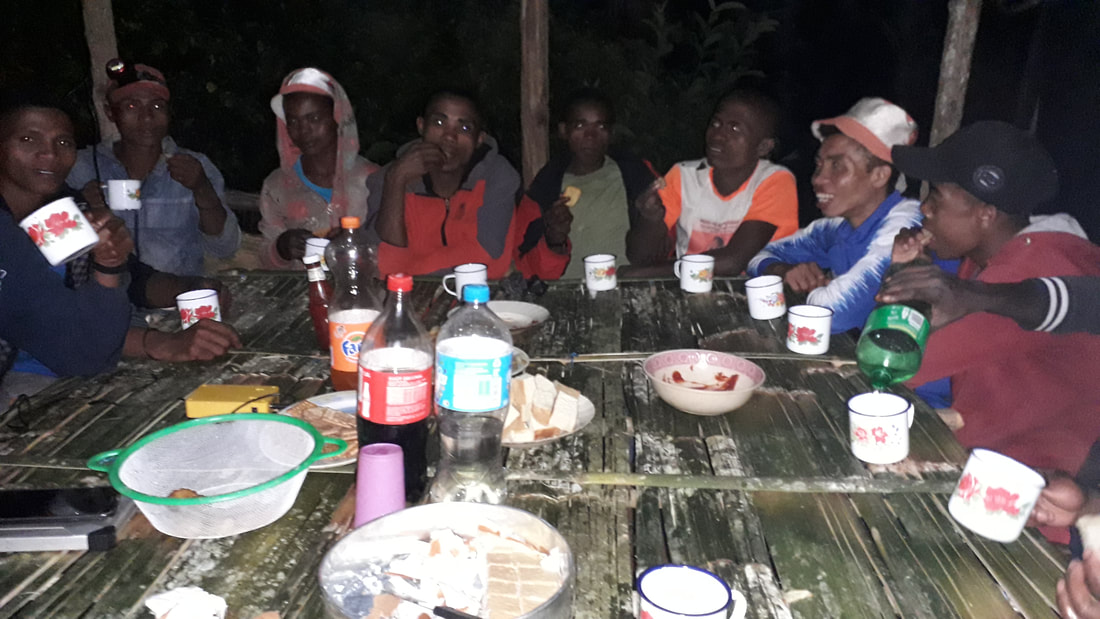 Tombony azoko tamin’izany ny fahaizako nampiaraka ireo fialam-boliko anakiroa ireo: misakafo miaraka amin’ny namana sy ny miaina tontolo maitso any anaty ala, no mbola niampy fahaiza- manao ody ambava-fo isan-karazany hanohananay aina nandritra ny terrain. Ho an’ny ekipako kosa indray dia sady nahafantatra no nanandrana zava-baovao (karazan-tsakafo sy ny fanamboarana azy) izy ireo, no voky sy niala voly niaraka tamiko nandritra ny fotoana izay nanaovako niasako tany. Tsy nijanona ho anay teo amin’ny campement samy irery akory izany traikefa sy fifaliana izany, fa nentin’ireo ekipa nody tany an-tranony avy koa, sady dia nazoto nanao fampiharana mihitsy ary ry zareo rehefa tonga any anivon’ny ankohonany. Hafatra manokana ho antsika mpikaroka
Lahatsoratra nosoratan'i Rindra Nantenaina. Sary nozarain'i Rindra ihany koa.
Fieldwork in Madagascar in time of COVID-19Vero Ramananjato shares her recent experience conducting fieldwork in Madagascar this year.
When it became possible to travel ... Everything appeared to be a rush suddenly, and I was completely losing grip after eight months of a somehow calm schedule. The crowd I was facing when I first went outside of my neighborhood terrorized me. It was because not only I had to maintain a safe distance from them, but mainly because I had to readjust my ears and my eyes to hear so much noise and see so many people. I have also become so easily worn out. Whenever I come back from permit preparation, shopping for fieldwork, or just a short meeting out of my house, I am so tired that I can’t focus on any other works for the day. And I soon realize that the daily physical exercises I did at home are nothing compared to the daily morning walk I used to do before and the long and exhausting hikes in the forest. Fieldwork has become a real challenge… I have never been very fit, but 8-month being confined at home have completely knocked me over. Walking 20km a day used to be a breeze, but it has become torture, even on a flat trail! Sometimes, I even have asthma attacks after a 20-min mountain hike or foggy walk, although I didn’t have any for more than five years. The entire field team also had a hard time when we got back to the field. In the forest, we have become easily breathless and always needed some time to recover before starting our daily tasks. We had to leave our campsite way earlier than before to hike slowly. I should have thought about getting in good shape before going back to the field! Thankfully, the team was very encouraging and supportive. They are cheering me like an athlete who just finished a run when I finally reach them, while they have already been taking a long break from the hike. Ordering materials for the field has also become a challenge. Before, I would go directly to the different stores to see and buy what we need. But now, since most of the shops in Madagascar changed the way they operate, I have to call the store, ask for all the details I need to know about particular items, and then order the items. It is so much stressing because sometimes they don’t know what I’m talking about. Sometimes, they would just hang up when I ask a lot of details. Finding the right field equipment is also even more challenging than before now. Usually, when I don’t find a research item in Madagascar, I can ask a friend/colleague abroad to buy it and bring it to Madagascar when they come for fieldwork. This has never been an issue before. But now, since there are barely any flights coming to Madagascar, which are often limited to selected groups of people, I can’t find anyone who would get me the materials I need for fieldwork. I had to borrow some from our colleagues and collaborating organizations, which was not always practical because everyone was going to the field simultaneously after such a long pause. This made me realize, though, how much the field research in Madagascar relies on external help, but at the same time made me think about finding ways to build what I need with what we have on the island. After fieldwork, when I get back to the city, everything just seems overwhelming. Facing the rush, the crowd and the busy schedule have become a little bit irritating and frustrating. In the field, I only think about nature, my tasks, and the team, that I always feel relaxed despite any stressful situations that may happen. Also, I can always find time for myself and my plans, I feel the warmth of being supported by others again, and I put things in perspective in the long term. But, once I’m back home in the city, everything is just so overwhelming, especially because I need to distance myself to protect my loved ones; and seeing some irresponsible people makes it even worse. It’s hard to get back to that serene state in the forest. And I so wish I was back in my tent again! Safety first?!?Despite the efforts of the field team to follow all the safety guidelines in place during fieldwork, we faced challenges when it comes to our own safety and the safety of the local communities. To work in some of our field sites, we have to camp in some villages and/or interact with villagers. However, because they are not well-aware of the pandemic situation, no one is wearing masks in the villages, and some of them even see us as threats when we wear masks. Widespread conspiracy and rumors have reached the remote villages, unfortunately. Most of them believe that Covid-19 is a pure invention despite several cases in Madagascar and even in their villages. They also think that even if it exists, it won’t reach them as they are remote and far away from the city where the disease is attacking. Thankfully, they are open to discussion and learn. As a scientist and educator, I felt compelled to educate my fellow Malagasy about what I know. And my team members did the same as well. They would ask us a lot of questions. What is Covid-19, how it spreads, how can you protect yourself and others, what to do if they suspect a case, what progress science has made to treat and limit the pandemic, etc. We’ve also discussed how aggressing or killing wild animals out of the fear of being infected is definitely not the way to go. It has become one of our duties to do so every time we arrive at a new village. I believe it is the role of all field researchers, even if they are not experts in the matter, to educate the local communities about this pandemic and any other diseases and show them the best practices. Such remote locations don’t always have access to up-to-date information and often are vulnerable to conspiracy and fear-mongering rumors.
Text by Vero Ramananjato. Pictures courtesy of Hasina Rakotoarisoa, Vero Ramananjato & Finaritra Randimbiarison
Nancia Raoelinjanakolona, a PhD student at the University of Antananarivo, affiliated with the lab, shares a story of how she got lost in the forest during fieldwork watching animals at night. “Batain-tsy zaka, afindra mora foana tahaka ny lalana”, io ohabolana io no mamintina ny tranga niainanay tamin’ny very tanaty ala. Misy fomba fiteny iray koa hoe ny lalana rehetra dia mitondra mankany Roma avokoa. Kanefa rehefa very iny dia misy tahotra kely foana hoe sao tsy ho tonga amin’ny toerana tiana aleha. 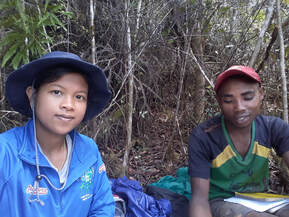 Nancia sy Michel Nancia sy Michel Mpianatra mpikaroka momba ny fifandraisan’ny biby mpihinam-boankazo (varika sy vorona) sy ny karazan-kazo ohaniny anaty ala aho ary miara-miasa amin’ny tekinisianina efatra avy eny ifotony any amin'ny ala akaikin'ny renirano Ihofa any amin'ny ala antsinanana, akaikin'ny faritra arovana Mantadia. Miambina hazo (mipetraka ka mijery ireo biby mitsidika sy mihinana voa) isan-karazany izahay mba hamaritana ny toetra sy ny tanjak’io fifandraisana misy eo amin’ny biby sy ny hazo io. Inona ary ny tranga nahazo anay?  Monkaranana voaniny Monkaranana voaniny Niasa alina izahay nanara-maso izay biby mety ihinana voa eo amin’ny hazo iray atao hoe Monkaranana. Tamin’ny 10 ora alina no tapitra ny fanaovana an’io fanaraha-maso io ka nanainga nody izaho sy i Michel (teknisianina). Diso fiviliana izahay nony niverina ka tsy tafaverina tamin’ilay lalana tamin’ny nandroso intsony. Ny alina anefa tamin’izay maizim-bolana, izahay tsy nitondra gps satria nentin’ny mpiara-miasa hafa, efa nihena ihany koa ny hazavan’ny jiro teny amin’ny loha. Rehefa nandeha nizotra ihany dia hita fa niha-nanalavitra ny lalam-be izahay. Inona no zavatra nataonay?  Ala any Ihofa Ala any Ihofa Teny an-dalana dia niady hevitra hoe taiza no tokony nivily ary aiza no haleha. Rehefa trangan-javatra tahaka an’izao moa dia mametraka fitokisana amin’ny olona eny ifotony no atao satria izy ireny no mahalala ny marivo ilomanosana hoy ny fiteny Malagasy. Nijery ny fizotry ny lalan’ny rano dia iny no narahina hoe mitondra midina sa miakatra. Nanaraka ny lalan’ny rano nidina izahay avy teo ary namakivaky niakatra tamina ala kitroka (tao anaty lohasaha no nahavery) ka natao izay nahatongavana tamina toerana nahitana marika iray. Ka tazana avy teny ambany ny lalam-be mahazatra. Rehefa ilay nihodikodina nitady lalana mazava iny dia nisy tahotra tao anaty hoe sao tsy tafavoaka eto ary kanefa ny andro efa miha alina be. Tamin’ity fotoana ity moa no nahavery ahy voalohany tanaty ala izany nandritra izay taona maromaro nanaovana fikarohana izay. Adin’iray teo izahay vao tafavoaka tao anaty lohasaha tao. Ahoana hoy ny ekipa nahalala izany?  Teknisianina miara-miasa amin'i Nancia Teknisianina miara-miasa amin'i Nancia Notantarainy tamin’ny ekipa iray manontolo ny zava-niseho ny maraina ka gaga ry zareo hoe toerana efa nandalovana ve dia nahavery anay. Asa, izay tokoa angamba ilay atao hoe tratry ny tamberin-tany!? Nahazo anarana hoe sampanan’i Nancia sy Michel ilay kirihitra ana tsilo nivoahanay nony taty aoriana ka fihomehezana foana rehefa mandalo eo. Inona no azo tsoahina tanatin’izay?
Lahatsoratra nosoratan'i Nancia Raoelinjanakolona. Sary tany amin'i Nancia sy Rindra Nantenaina. What is it like to be a student field researcher?Hasina Rakotoarisoa, a Master student at the University of Antananarivo, shares her first field experience working with the field team in Ranomafana, Madagascar.  Spending an hour walking along a four kilometers trail, being a delicious food for leeches, fleas and mosquitoes, falling at least three times in the forest, and getting wet on the way back home are what come to my mind while reminiscing about my experience as a student field researcher. During one month, all of the above were some of the highlights of my everyday life, when I was on a field expedition in the rainforests of Ranomafana, in the southeastern part of Madagascar, last December.  Trust me; it was so worth it and exciting. Not only were we able to collect data without any problems, but we also lived a life full of adventures, became “tourists” in our own island, and definitely learned new cultures. I am delighted to share with you the three main points that, I believe, made my experience so rich as a Malagasy student researcher. I really think that most field researchers can relate to at least one, if not all, of these. 1. We lived a life full of adventures I live in Madagascar’s capital called Antananarivo, and I have grown living in my own comfort zone. I take the bus to go to school, sleep in a comfortable and pretty large bed, spend my time with friends and family during the weekend, and communicate with them via texts or calls during the weekdays. All these little comforts were nothing more than memories when I was in the field because none of these was feasible anymore. I read hundreds of stories of the lives of researchers in the field before going out there, and I remember most of them emphasized that being a researcher often means sacrificing their lives to improve biodiversity. Still, it also comes with an extraordinary adventure. What they said all made sense to me upon my arrival in the field, and I could not agree more with them. It is definitely a life full of adventures; we slept on the ground, we took a shower somewhere in the corner next to our tent, and we could not talk to our family and friends even if we wanted to call them badly because there was no phone network. In the midst of it all, though, we enjoyed being the only human beings in nature, and the idea of spending our time there to bring changes and impact our nature positively was rewarding. 2. We became “tourists” in our own island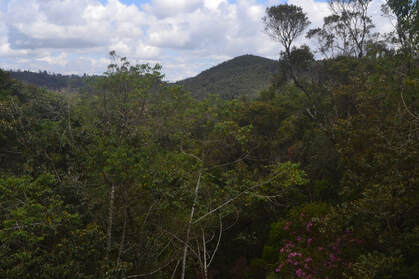 Madagascar is globally known for its endemic species; animals like lemurs, chameleons, frogs, and even plants. People travel from every corner of the globe to Madagascar to admire our unique fauna and flora; thus, being given the opportunity to connect with nature this close was a great privilege for me. Protecting these species and discovering everything about them were some of the main reasons why I chose to become a researcher and an explorer. My strong desire is even to draw my career path around research for me to improve the lives of these beautiful creatures. In the field, I was so sad to know that the locals destroy the forest. Seeing the reality in the field prompted me even more to make this dream of mine a reality. My goal is to do good work to maintain the beauty of our biodiversity.  I particularly loved being a tourist in my own island. The fact that we are researchers does not mean that we cannot explore; we work and travel at the same time. The moment you come and visit our island, you will realize how powerful it is to be a student like me. Not only do you get to make the most of your life as a student researcher, but you will also get to enjoy discovering other places that you do not necessarily call “home” yet. At least for me, discovering new locations makes me love the place and its surroundings more and more each day. 3. We discovered new cultures I really enjoyed living an adventure as a field researcher, and allowing myself to be a tourist in my own island as well was so exciting. Culture and language play a key role in that. Born and raised in the capital, where I grew up speaking/using the official Malagasy language in school and everyday life, I am always impressed while communicating with others outside of Antananarivo.  The various dialects spoken across the island show how rich our culture is. Although it is always said there is one official language on the island, our dialects somehow differ from one place to another, and from my own experience, I even noticed the choice of words, and the accent could slightly change from one village to another. Believe me, I’m a native Malagasy speaker, but there were times when I did not understand what some people in Ranomafana said (mostly Tanala and Betsileo). I was impressed by our local guides for making our communication with the local community flow smoothly, thanks to their ability to “translate” for us. Don’t get me wrong, this does not mean that we did not communicate with the community at all. At first, I personally struggled with “language barriers”, but as time went, I learned to speak the local dialect, picked a few words gradually, and, to be honest with you, I had so much fun learning this new dialect. I think my willingness to embrace the culture and learn a new dialect made my connection with the local guides stronger and has helped us work better together. I believe our respective languages should not limit us. Long story short, it was such a great experience that I look forward to continuing. I am going to the forest this week, and I can't wait to explore and enjoy new adventures! I'll share more when I'm back ... Text by Hasina Rakotoarisoa. Pictures courtesy of Hasina Rakotoarisoa, Vero Ramananjato & Finaritra Randimbiarison
|
We're using this space to share updates on our adventures in the field. Archives
March 2024
Categories
All
|







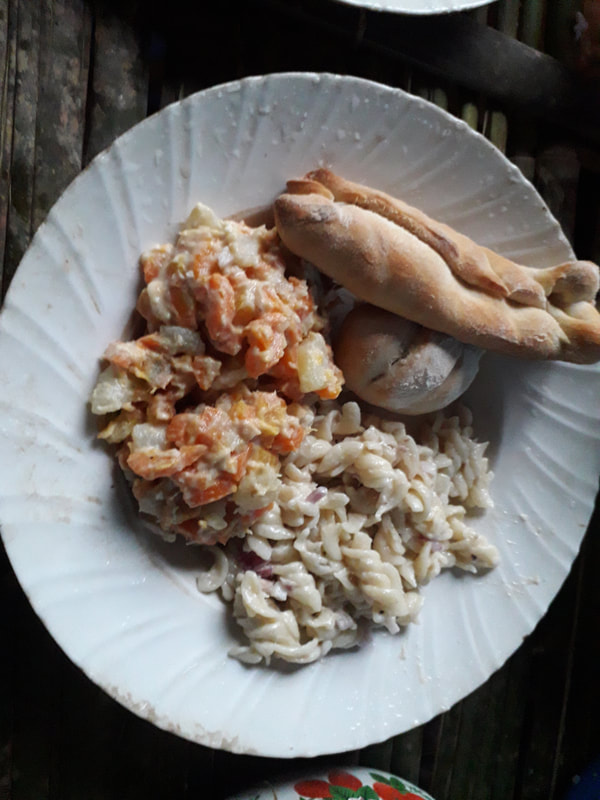




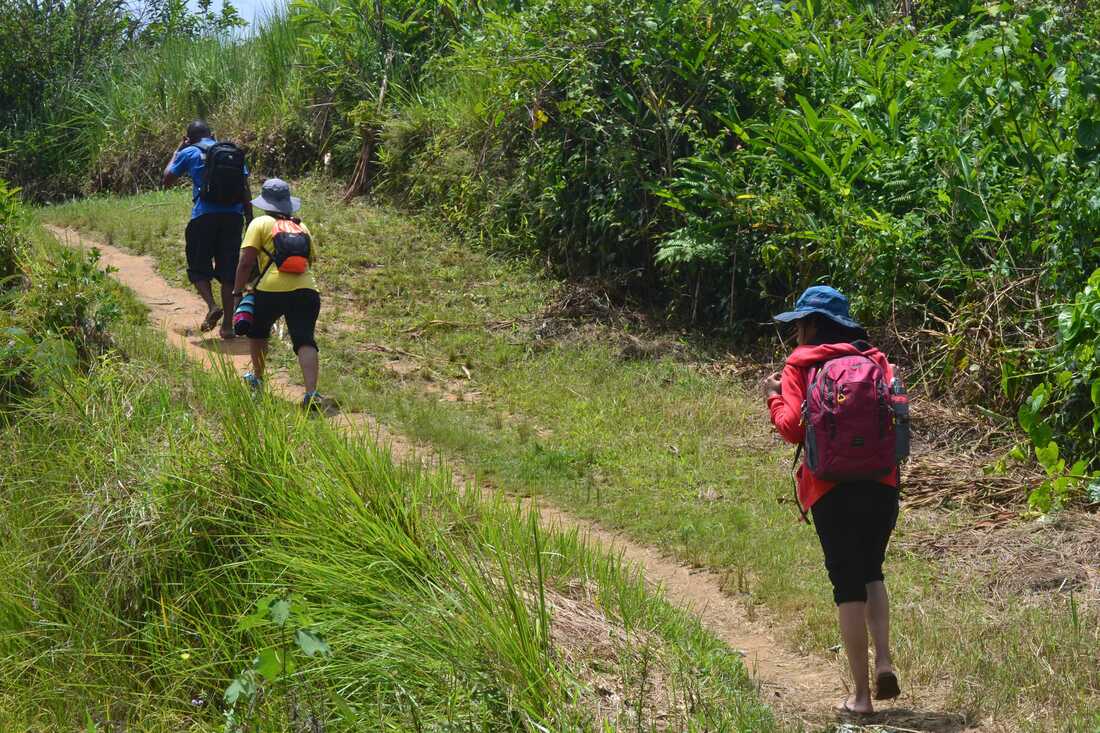


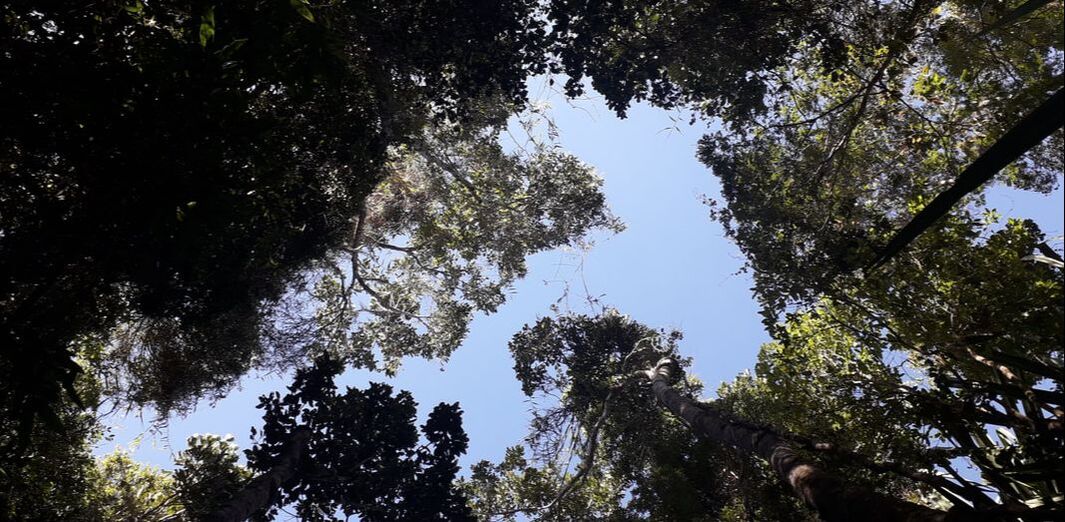


 RSS Feed
RSS Feed
